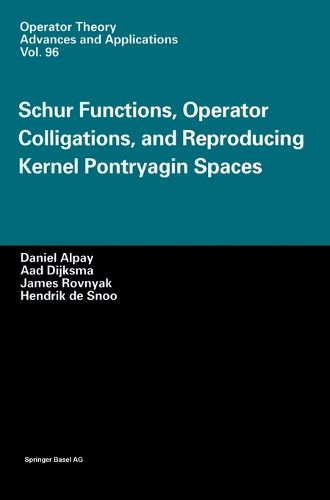Readings Newsletter
Become a Readings Member to make your shopping experience even easier.
Sign in or sign up for free!
You’re not far away from qualifying for FREE standard shipping within Australia
You’ve qualified for FREE standard shipping within Australia
The cart is loading…






Generalized Schur functions are scalar- or operator-valued holomorphic functions such that certain associated kernels have a finite number of negative squares. This book develops the realization theory of such functions as characteristic functions of coisometric, isometric, and unitary colligations whose state spaces are reproduced kernal Pontryagin spaces. This provides a modern system theory setting for the relationship between invariant subspaces and factorization, operator models, Krein-Langer factorizations, and other topics. This text is intended for students and researchers in mathematics and engineering. An introductory chapter contains background material, including reproducing kernal Pontryagin spaces, complementary spaces in the sense of de Branges, and a result on defining operators as closures of linear relations. The presentation is such that the indefinite case is handled parallel to the definite case.
$9.00 standard shipping within Australia
FREE standard shipping within Australia for orders over $100.00
Express & International shipping calculated at checkout
Generalized Schur functions are scalar- or operator-valued holomorphic functions such that certain associated kernels have a finite number of negative squares. This book develops the realization theory of such functions as characteristic functions of coisometric, isometric, and unitary colligations whose state spaces are reproduced kernal Pontryagin spaces. This provides a modern system theory setting for the relationship between invariant subspaces and factorization, operator models, Krein-Langer factorizations, and other topics. This text is intended for students and researchers in mathematics and engineering. An introductory chapter contains background material, including reproducing kernal Pontryagin spaces, complementary spaces in the sense of de Branges, and a result on defining operators as closures of linear relations. The presentation is such that the indefinite case is handled parallel to the definite case.